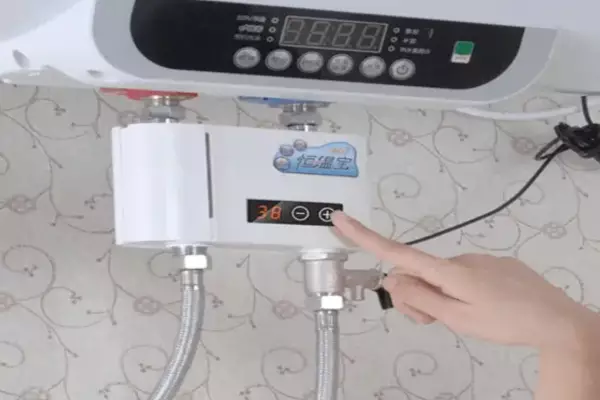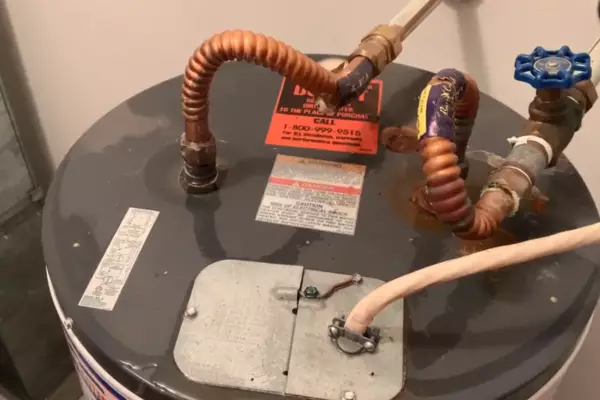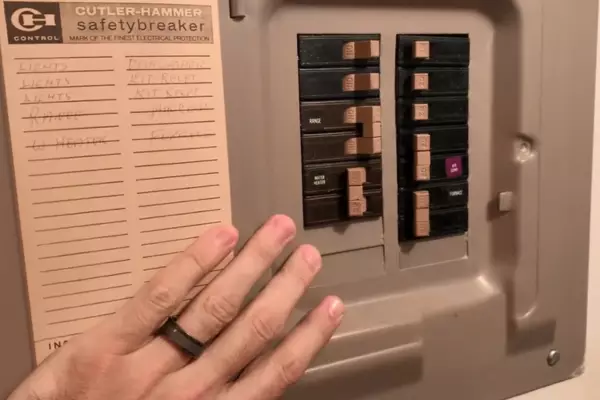Water heaters are ubiquitous in modern homes, yet many people are unsure of how to distinguish the hot water line from the cold. Knowing which water line is hot and which is cold can be crucial, especially if you’re planning on doing some DIY plumbing.
Being able to tell the difference between the hot and cold water lines connected to your water heater helps ensure correct installation and maintenance. Improper connections can lead to problems, such as inefficient heating, leaks, or even the potential risk of burns from unexpected hot water.
The identification process is not as complex as it seems. Familiarity with the physical characteristics, industry standards, and usage of specific tools can effectively guide you in identifying these lines without the need for professional help.
Contents
Common Types of Water Heaters
There are two main types of water heaters that are commonly found in homes and buildings:
Tankless Water Heaters
These heaters, also known as on-demand or instantaneous water heaters, provide hot water only when it’s needed. They don’t produce the standby energy losses associated with storage water heaters, making them more energy-efficient.
These heaters heat water directly without the use of a storage tank. When a hot water tap is turned on, cold water travels through a pipe into the unit, where either a gas burner or an electric element heats the water.

Tank-based Water Heaters
This type is the most traditional and widely used. Tank-based heaters store and heat large volumes of water in a tank. The tank is typically insulated to keep the water hot between heating cycles. When you open a hot water tap, the hot water from the top of the tank is replaced by cold water that’s heated at the bottom of the tank.
Anatomy of a Water Heater
Understanding the basic setup of a water heater can aid in distinguishing the hot and cold water lines. Essentially, a water heater works by drawing cold water in through the cold water supply line, heating it using either gas or electricity, and then moving the heated water through the hot water line into your home’s pipes.
Cold Water Supply Line
This line carries cold water from your home’s main water supply into the water heater. The cold water supply line typically connects to the bottom part of the water heater, where the heating element or gas burner is located.
Hot Water Line
Once the water is heated to the set temperature, it rises to the top of the tank (since hot water is lighter than cold water). It then moves through the hot water line, which is connected to the top of the water heater, and travels to the various fixtures and appliances in your home that require hot water.
Physical Signs of Hot and Cold Lines
Pipe Temperature
Touch is a straightforward method to differentiate between hot and cold water lines. After the water heater has been running, the hot water line will generally be warmer than the cold one. However, if the heater has been off for a while or if the pipes are well-insulated, the difference may be slight and hard to perceive.
Line Position on Water Heater
Usually, the cold water line connects to the lower part of the water heater. This design allows cold water to enter near the heating element or burner, ensuring it gets heated efficiently. In contrast, the hot water line connects to the top of the water heater. This arrangement allows the heated water, which naturally rises due to its lower density, to exit the tank easily.
Use of Thermometer for Identification
For a more precise measure of the water lines’ temperatures, a non-contact or infrared thermometer can be used. By pointing the thermometer at the pipes, you can get an accurate temperature reading. The pipe with a higher temperature reading is the hot water line.

Industry Standards for Hot and Cold Lines
Color Coding System
The color coding system is a common industry practice to help distinguish hot and cold water lines. In many new installations, the hot water pipes are colored red or have red markings, while the cold water pipes are blue or have blue markings. This color-coding, however, may not be followed in all settings, especially in older homes.
Standard Locations for Hot and Cold Lines
Another common practice is the placement of the hot and cold water lines. Most often, the hot water line is located on the left and the cold water line on the right. This can vary, however, based on the plumbing setup, installer preferences, or regional standards.
Manual Testing of Water Lines
Safety Precautions
Before attempting manual testing of the water lines, it is crucial to switch off the water heater and let it cool. This is to avoid burns from hot water in the lines. Wearing protective gloves can provide an extra layer of protection.
Steps to Perform Manual Testing
- Open a faucet connected to the water heater and let the water run for a minute.
- Carefully touch the water from each line, noting the temperature difference.
- The line with warmer water is the hot water line.

Tools for Identifying Water Lines
Infrared Thermometers
Infrared thermometers can provide accurate, contactless measurements of the pipes’ temperatures. These devices work by detecting the infrared energy emitted by the pipes and converting it into a temperature reading.
Heat Sensing Cameras
Heat sensing cameras, also known as thermal cameras, visualize heat, making them ideal for distinguishing between hot and cold water lines. These cameras capture the heat difference between the pipes and display it as a thermal image. The hot water line will appear warmer on the thermal image.
Mistakes to Avoid
Potential Missteps in Line Identification
Misidentification of the hot and cold water lines can occur when relying solely on physical characteristics like color coding or line position. These characteristics can vary and are not always reliable. The most reliable method of identifying the lines is through temperature testing.
How Mistakes Affect Water Heater Function
Incorrect identification and connection of hot and cold water lines can lead to inefficient heating, increased energy consumption, and decreased lifespan of the water heater. Moreover, it can pose safety risks due to the unexpected flow of hot water.
Tips for Line Identification
Best Practices in Line Identification
To ensure accurate identification of hot and cold water lines, use a combination of methods: physical characteristics, industry standards, and temperature testing. Cross-verification through multiple methods can help avoid mistakes.
Seeking Professional Help
If the identification process seems overwhelming, it might be best to seek professional help. A licensed plumber has the knowledge, experience, and tools to correctly identify and work with hot and cold water lines, ensuring the efficient and safe operation of your water heater.
Frequently Asked Questions
Why is it important to identify hot and cold water lines?
Proper identification of hot and cold water lines is crucial for the correct installation and maintenance of a water heater. Incorrect connections can lead to inefficient heating, leaks, or even potential burns.
What is the most reliable way to identify hot and cold water lines?
The most reliable way is to test the temperature of the water flowing through each line. The hot water line will carry warm or hot water, while the cold water line will carry cold or room temperature water.
Can I identify the lines by just touching them?
Yes, but it may not be as reliable, especially if the water heater has been off for some time. Using a non-contact thermometer or infrared sensor can give a more accurate temperature reading.
Conclusion
Being able to correctly identify the hot and cold water lines on your water heater is an essential skill, especially for those who like to take matters into their own hands. It saves you from possible mishaps and ensures the efficient operation of your heater.
Understanding the basic setup of a water heater and the physical characteristics of hot and cold water lines can go a long way in making the identification process easier. By using temperature as a major determinant, one can avoid potential mistakes associated with color coding or the position of lines.
To wrap it up, it’s safe to say that with a little patience and the right tools, identifying hot and cold water lines on your water heater doesn’t have to be a daunting task. Always remember, if in doubt, it’s best to seek professional help.

